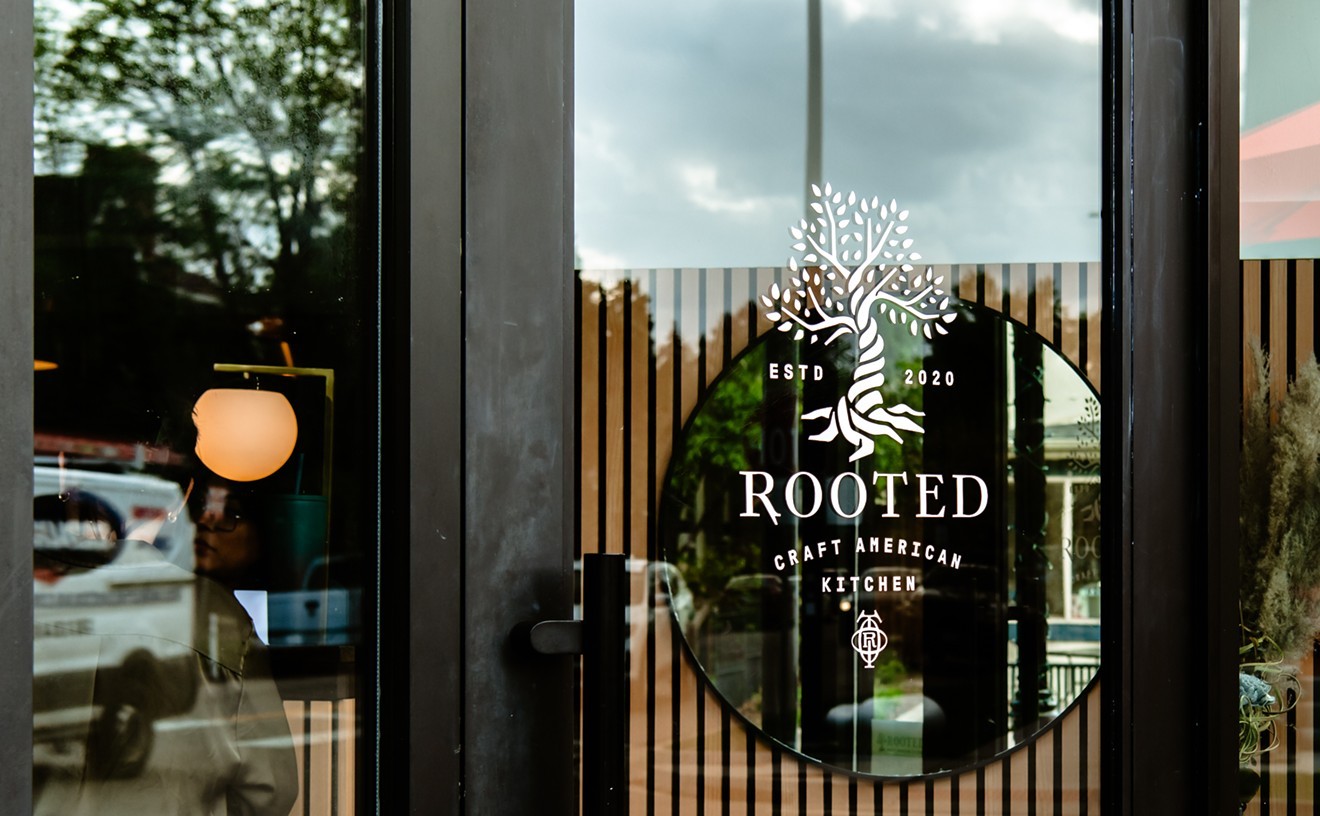This strip mall has a different vibe than the endless blocks of shoulder-to-shoulder shops and restaurants I frequented on my trip up Federal Boulevard. For one thing, it's a miniature island in a sea of lawns and houses and convoluted cul-de-sacs that resemble Mayan hieroglyphs from a bird's-eye view. There are no other discernible shopping centers within viewing distance up or down any of the cross streets here, which has me feeling marooned, foundering in an inverse latitude or one of yesterday's time zones. For another, it's teeming with kids -- pouring out of a karate studio, darting out from between parked cars, wriggling restlessly on the bench seats at Iwayama Sushi & Da Big Kahuna Bistro, where I've journeyed to sample Hawaiian specialties. But the cluttered interior of the narrow, Asian-inspired grill is instantly comfortable and reminiscent of restaurants closer to home, with its hodge-podge decor from the pages of a Lowe's home improvement catalogue, rows of maneki-neko cats with paws raised in solidarity, and perky soy sauce bottles on every table.
See also: Ethniche: Eating my way around the globe one month at a time
I'm here for dishes I've never encountered in a restaurant before: kalua pork, the near-mythical loco moco and maybe, hopefully, something with Spam. The menu was certainly promising, featuring an extensive list of maki, nigiri and other sushi-style offerings, covering the traditional, the creative and the slightly wacky, mixed with Hawaiian plate lunches (available for dinner, too) and fish in various grilled, fried and steamed preparations. Between sips of Kona Brewing's Longboard Lager and the howler monkey calls of the child at the next table, Amy and I select a couple of appetizers to get us started and to gauge the amount of food we need in order to get a decent sampling and still go home with some lunch-worthy leftovers.
Ahi poke is as close to native Hawaiian as we're likely to find in other spots around Denver, with versions available at fish houses and sports bars across the city. Absent the glaze of soy sauce and sesame oil courtesy of more recent Japanese immigrants, Hawaiians have been scarfing down raw fish for as long as they've been able to haul them thrashing from the sea into boats or onto shore, spiking the toothsome meat with the various salts and seasonings at hand, fashioning salad-ish plates to appease some motherly notion of a balanced diet, when really the fish itself needs few adornments to achieve perfection. Iwayama's version doesn't mess too much with the basic formula, but it doesn't need to. The tuna is fresh and translucent,like dark garnet gems dressed with white slivers of onion, loops of scallion and a nutty slick of sesame cut with salty soy.
Entrée decisions slow in coming, and maybe even unnecessary, we continue with a couple of decidedly more modern rolls. The lobster bacon roll sounds enticing and I secretly hope that the chef, in a moment of mad genius, has actually figured out how to make bacon out of lobster. The reality isn't quite the stuff of dreams or fantasies but still hits a playful note: lobster tempura snuggled against crisp bacon strips in a blanket of nori and rice, with a little avocado and asparagus joining in the group hug. I liked these despite the overall impression that lobster is perhaps too delicate and refined for this type of culinary roughhousing.
Not so for Spam, which could be kicked around and berated without any loss of its nitrite-riddled integrity, but in our order of musubi is instead treated with care and love, seared with a crisp exterior, brushed with a sweet lacquer and nestled in petite, square-edged rolls. It's not so much an elevation of processed meat as an accentuation of its best features -- the hammy flavor with no hint of those lower pig parts so often joked about, the soft texture warmed to eliminate the jellied coating, and the bites cut small enough to minimize the aroma of canned pet food.
Keep reading for more of Iwayama Sushi & Da Big Kahuna Bistro. Despite a quick succession of three small but flavor-packed appetizers, we're ready for the plate lunches. My kalua pork is pulled shoulder at its minimalist best, featuring little more than salt, pepper and a quiet smokiness that may have come from a bottle, although applied judiciously. Twin mounds of rice soak serve as a blotter for the juice and fat that escape from the shreds of just-tender meat. Amy goes with the loco moco, here served in a bowl rather than the more common plate. Everything is cooked well, from the char-grilled hamburger patties to the sunny-side-up fried egg waiting to add its rich yolk to the brown gravy. But somehow I just don't really get it. There are no Japanese or Korean flavors to add spice, tang or umami to the simple gravy, nothing exotic at all that would indicate the dish's South Pacific origins, no variations in texture to liven up the palate. I know it's comfort food, even expertly prepared comfort food; it's just not my comfort food. Much of the canon of the Hawaiian plate lunch phenomena is based on economics and proximity; Korean kalbi and Japanese tonkatsu have become standard protein mains sided by plain rice and macaroni salad, which is also inexplicably nothing more than boiled noodles slathered in mayo (Da Big Kahuna adds a few shreds of carrot for a little color). Slow-cooked pork, rich and spicy Korean sauces, and crunchy breaded cutlets are all things I can get behind, with gusto even, but no amount of exploration into the socio-economics of Hawaiian history can explain how such a frankly ho-hum dish has achieved such prominent status in the world of international working-class food.Maybe Sriracha sauce would do the trick, or a few more of those Longboard Lagers to jump-start the appetite. I'm not blaming the kitchen; every individual component seemed about as properly made as possible. But really, even Spam has more verve. I have three more weeks of Hawaiian exploration ahead of me and I'm determined to find the perfect loco moco to prove me wrong. But if not, at least there's always musubi.
For more from our tour of Denver's cultural, regional and international restaurant scene, check out our entire Ethniche archive.
Follow @CafeWestword











